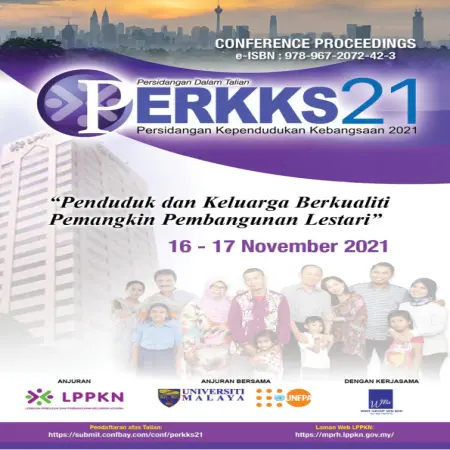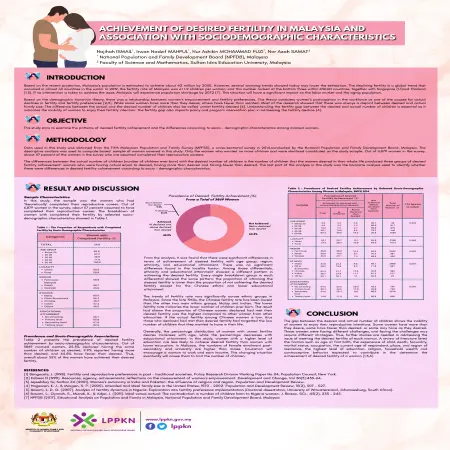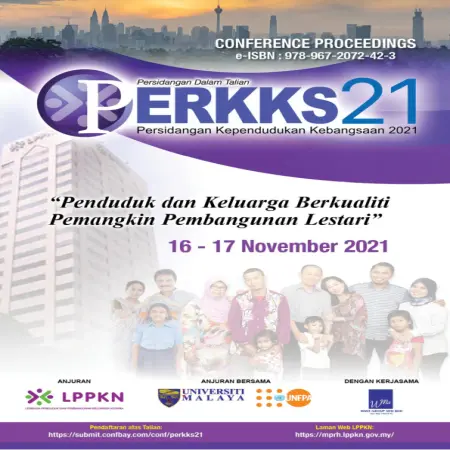TOPICS
Results for Topics : "Marriage"
|
Pendekatan kaunseling disermen dalam menangani konflik perkahwinan era pendemik covid-19
Item Type: Article
Year: 2021
Abstract: Marital conflict management in a quality manner is necessary considering the functionality of the husband and wife is the backbone
to marital bliss. In this paper, the use of the 'Pendekatan Kaunseling Disermen' introduced by William J. Doherty is proposed to be used during counseling...[Read More]
|
|
|
|
|
|
Communication activities between spouses during covid-19 pandemic
Item Type: Article
Year: 2021
Abstract: Interpersonal communication is vital in every relationship. In this current situation of pandemic Covid 19, movement control orders (MCO) have been implemented by the government. Due to the MCO, people spend more time at home and the communication activities within the family might...[Read More]
|
|
|
|
|
|
Penghayatan islam dan hubungannya terhadap pengabaian qawwamah dalam perkahwinan
Item Type: Article
Year: 2021
Abstract: Qawwamah in marriage is an issue that is often raised when there is domestic conflict. Neglect of qawwamah by the husband will have very big implications for the wife. The emergence of domestic dysfunction is due to the problem of leadership that is not based on the appreciation of...[Read More]
|
|
|
|
|
|
Pencetus utama konflik perkahwinan sepanjang fasa pertama perkahwinan dalam kalangan pasangan muda: kajian kes semasa Perintah Kawalan Pergerakan (PKP)
Item Type: Article
Year: 2021
Abstract: The first phase of marriage is often associated with a crisis phase, an adjustment phase and a stress phase. The success of the young couple through this phase will guarantee the stability of the marriage and the survival of the family institution. Divorce is a major threat to young...[Read More]
|
|
|
|
|
|
Perceraian dalam kalangan wanita Melayu Terengganu
Item Type: Article
Year: 2021
Abstract: This article analyzes the issue of divorce claims among Terengganu Malay women. Writing from a social history perspective, focusing on the period from 1963 to 1978 based on the written report of the Besut Kadhi Office obtained at the National Archives of Malaysia Terengganu Branch. The...[Read More]
|
|
|
|
|
|
Pencetus utama konflik perkahwinan sepanjang fasa pertama perkahwinan dalam kalangan pasangan muda: Kajian kes semasa Perintah Kawalan Pergerakan (PKP)
Item Type: Book Section
Editor:
Year: 2021
Abstract: The first phase of marriage is often associated with a crisis phase, an adjustment phase and a stress phase. The success of the young couple through this phase will ensure the stability of the marriage and the survival of the family institution. Divorce is a major threat to young...[Read More]
|
|
|
|
|
|
Correlates and consequences of delayed marriage in Malaysia
Item Type: Article
Year: 2021
Abstract: This paper aims to examine the correlates of age at first marriage and the consequences of late marriage. Data for this paper were drawn from the 2014 Malaysian Population and Family Survey. Simple cross- tabulation and multiple classification analysis were used for the analysis. Age...[Read More]
|
|
|
|
|
|
Achievement of desired fertility in Malaysia and association with sociodemographic characteristics
Item Type: Scientific Poster
Year: 2021
Abstract: This study aims to examine the patterns of desired fertility achievement and the differences according to socio - demographic characteristics among married women.
|
|
|
|
|
|
Peraturan perkahwinan transnasional: Kajian kes dan penelitian semula berasaskan konvensyen penghapusan semua bentuk diskriminasi terhadap wanita (CEDAW)
Item Type: Book Section
Editor:
Year: 2021
Abstract: This paper discusses the issue of transnational marriage from the context of determining the nationality of a child resulting from the marriage of a Malaysian women to a foreign citizen’s spouse based on the Convention on the Elimination of Discrimination against Women (CEDAW).
|
|
|
|
|
|
The well-being of adolescents in divorced families
Item Type: Thesis
Year: 2020
Abstract: This study aimed to explore an in-depth understanding on the wellness of teenagers in divorced families. This qualitative study used the phenomenological approach to explore the experience of ten teenagers living with single mothers after the divorce of their parents. Participants in...[Read More]
|
|
|
|
|














